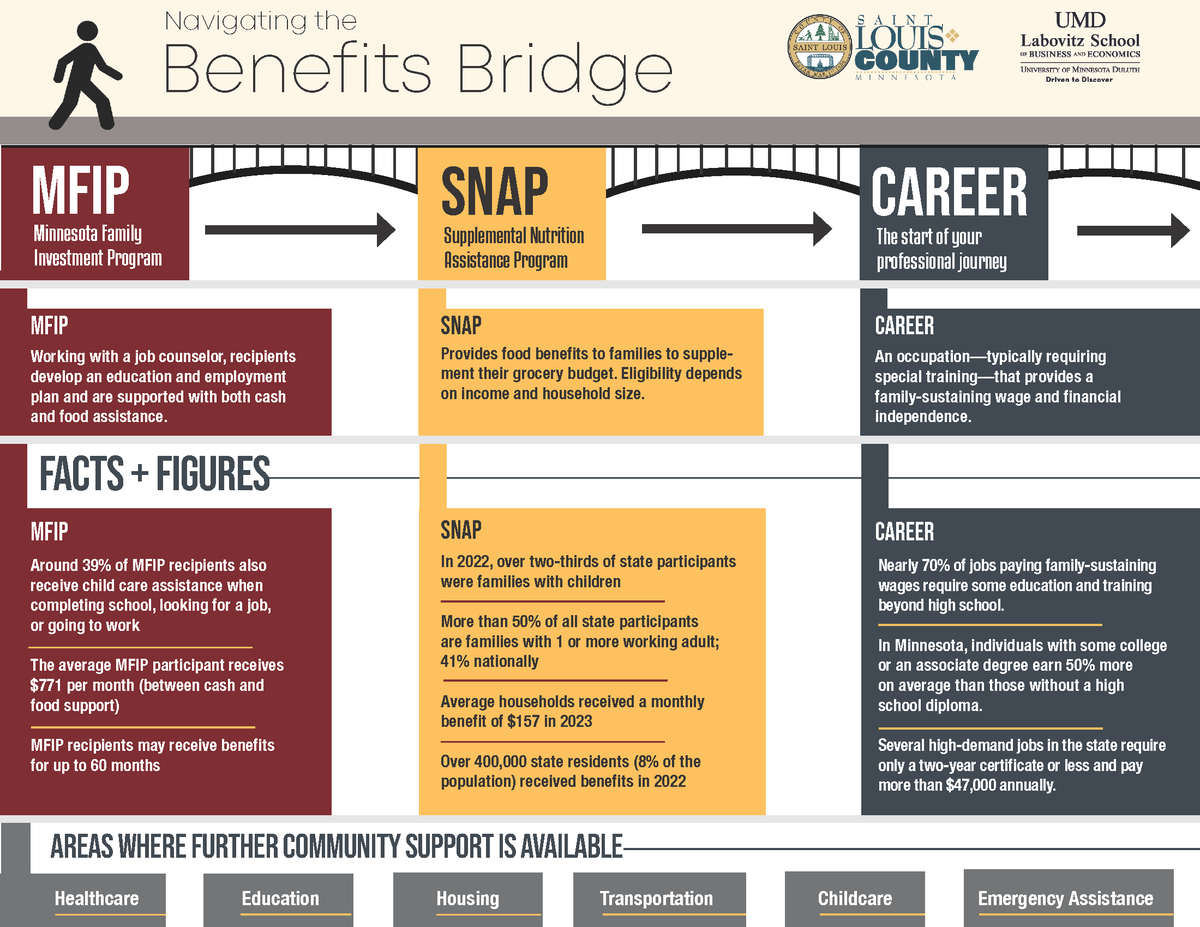Public assistance programs are designed to be a bridge to economic stability; as individuals take home more earnings and become more financially stable, their benefits naturally decrease. Yet in some cases, by accepting a raise or increasing the number of working hours—in turn increasing wages—an individual may unintentionally reduce their net income (i.e., their combined wage plus benefits). Also, given the number of programs that exist and often-complex eligibility rules, it can be very difficult for benefits recipients to understand how changes in their income might affect their eligibility for various programs.
Recently, the Economic Services and Supports Division of St. Louis County, Minnesota—the local agency that administers many of the state and federal public assistance programs—asked the Bureau of Business and Economic Research (BBER) to provide a dynamic tool that could be used by career counselors to advise their clients about the potential financial impacts of a career change. The BBER collected feedback from counselors, conducted a literature review and online search to identify existing tools, and analyzed data from various sources to determine the accuracy and usefulness of potential tools.
The BBER’s full report, evaluation of existing tools, and its recommendation and creation of the ideal tool will be released soon. The BBER will also train the group on how to use the tool.
Additionally, in conversations with career counselors, several counselors mentioned wanting a handout or infographic that depicts the process of moving from public assistance to a career. The counselors felt that this type of resource could make conversations with clients easier as current materials are too complex. The infographic shown above is the one the BBER created for the group. It is also available for download on our website.
The infographic shows the process of moving between the Minnesota Family Investment Program (MFIP) to the Supplemental Nutrition Assistance Program (SNAP) and finally to a career with a family-sustaining wage. Information about each program, additional community support, and the long-term benefits of investments in higher education are shown.
We hope this infographic can be useful to career counselors and job seekers alike. A special thank you to the Labovitz School of Business and Economics Communications Specialist, Mat Gilderman, for his assistance in designing the infographic!
